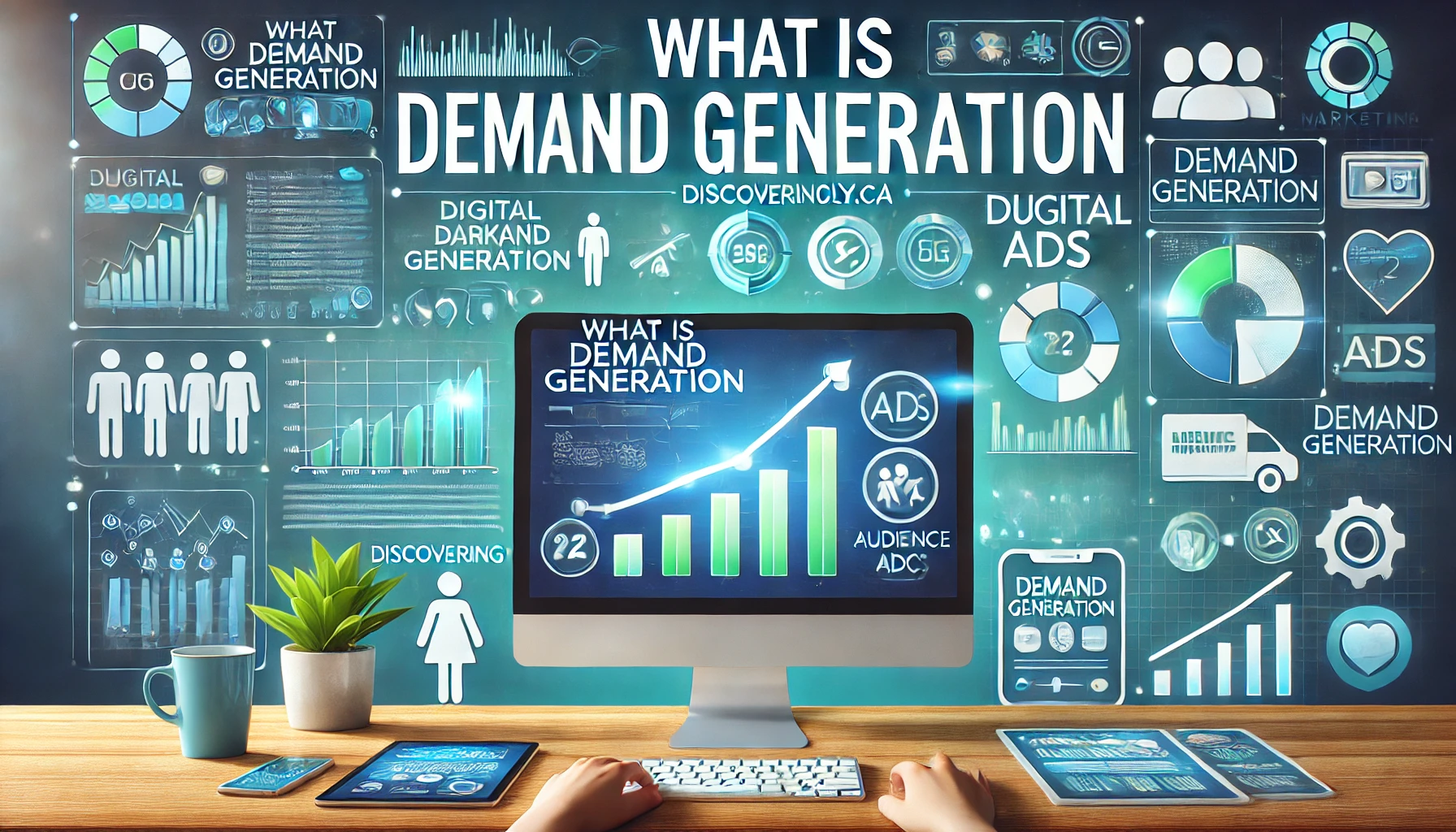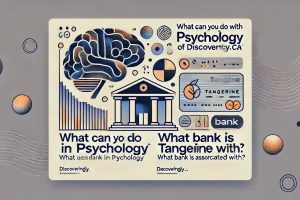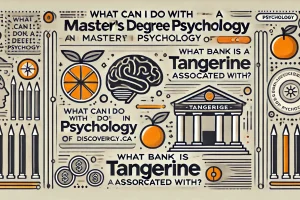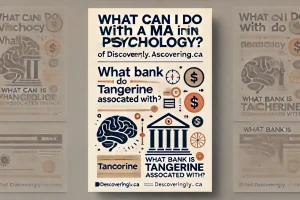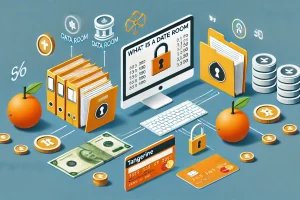What Is Demand Generation? Discoveringly’s Complete Guide to Driving Interest and Building Awareness
Demand generation is a marketing strategy focused on creating awareness and excitement for a company’s products or services to generate new leads and drive growth. Unlike traditional advertising, demand generation doesn’t aim to sell immediately. Instead, it seeks to inform, educate, and build interest among potential customers, establishing a relationship that ultimately guides them toward making a purchase.
Demand generation encompasses various tactics—from content creation and social media to events and personalized email campaigns—all designed to build long-term interest. It’s a holistic approach that integrates with every stage of the customer journey, helping brands attract and nurture leads while positioning them as trusted solutions in their industry.
1. The Basics of Demand Generation
- Goal: Demand generation aims to educate and spark interest in potential customers, establishing a connection that paves the way for a sale.
- Difference from Lead Generation: While demand generation builds awareness and interest, lead generation focuses on capturing information (like an email address) and moving potential customers closer to a purchase. Demand generation is the initial step in building the “why” behind a product or service, while lead generation follows to secure potential buyers.
- Focus on Education: Rather than simply promoting a product, demand generation focuses on educating the audience, addressing their needs, and showing how your brand can solve their problems.
2. How Demand Generation Works
Demand generation strategies focus on reaching audiences who may not yet know they have a need for a product or service. Here’s how it typically works:
- Awareness Stage: The first stage is capturing the attention of potential customers through blog posts, social media content, and advertisements.
- Engagement Stage: Engaging with the audience through valuable content, webinars, or product demos to build interest and credibility.
- Nurture Stage: Follow-up campaigns such as email marketing and personalized content keep the audience engaged over time, gradually turning interest into intent.
3. Key Components of Demand Generation
A successful demand generation strategy includes several components, all working together to build lasting customer relationships. These include:
- Content Marketing: Creating valuable content (like blogs, eBooks, videos) that educates potential customers and positions your brand as an industry expert.
- Social Media Marketing: Engaging with audiences on platforms like LinkedIn, Facebook, or Instagram to raise brand awareness and foster a community around your brand.
- SEO (Search Engine Optimization): Optimizing your website and content for search engines to attract organic traffic, making it easier for people to discover your brand.
- Webinars and Events: Hosting educational webinars, live demos, and events to interact with potential customers and showcase your products.
- Email Campaigns: Regular email newsletters and personalized follow-ups keep your audience informed and engaged, nurturing relationships over time.
4. Benefits of Demand Generation
Demand generation offers numerous advantages that benefit businesses in both the short and long term:
- Brand Awareness: Demand generation strategies introduce new audiences to your brand, building awareness that lasts.
- Trust and Credibility: By providing helpful, informative content, you establish your brand as a trusted authority in your industry.
- Stronger Customer Relationships: Demand generation creates a solid foundation for customer relationships by focusing on the value you can provide before expecting a sale.
- Increased Pipeline Quality: Leads generated through demand generation efforts are more likely to convert since they’re genuinely interested in your brand.
5. Popular Demand Generation Tactics
Demand generation encompasses a variety of strategies, each with its unique benefits. Some commonly used tactics include:
- Educational Blog Content: Regular blog posts that address audience pain points help build organic traffic and keep potential customers engaged.
- Social Media Advertising: Targeted ads on social media platforms reach new audiences and promote your brand’s message effectively.
- Webinars and Product Demos: Offering free, informative sessions that provide real value to your audience builds interest and fosters trust.
- Email Nurturing Sequences: Drip email campaigns can nurture leads over time by delivering relevant content based on their interests and engagement level.
6. Difference Between Demand Generation and Inbound Marketing
While both strategies aim to attract audiences, inbound marketing focuses on drawing users in through content that matches their search queries or interests. Demand generation, on the other hand, is more about creating that initial interest—even if the audience isn’t actively looking. In other words:
- Inbound Marketing: Attracts users actively searching for solutions.
- Demand Generation: Generates interest in potential customers who may not yet know they need the product.
7. Metrics for Measuring Demand Generation Success
To evaluate demand generation performance, businesses can track various metrics:
- Website Traffic and Time on Site: Increased site visits and engagement time can indicate that your content is drawing attention and keeping visitors interested.
- Engagement Rates: Social media and email engagement rates help gauge how well your content is resonating with the audience.
- Conversion Rates: Although not strictly focused on sales, conversion rates can reveal how many viewers take action, such as signing up for a newsletter or downloading an eBook.
- Cost per Lead (CPL): Measures the cost efficiency of your demand generation efforts.
8. Challenges of Demand Generation
While demand generation has many benefits, there are some challenges to consider:
- Longer Lead Times: Since demand generation builds awareness and trust before a sale, it often takes time to see results.
- Resource-Intensive: Effective demand generation requires a consistent output of high-quality content and engaging campaigns, which can require significant time and resources.
- Content Saturation: In today’s crowded digital space, creating unique and valuable content that stands out can be challenging but is essential for effective demand generation.
9. Best Practices for Demand Generation
- Consistency Is Key: Keep content regular and engaging across multiple channels to maintain a strong presence.
- Target the Right Audience: Invest in research to understand your ideal audience and develop content that resonates with them.
- Focus on Value, Not Sales: Demand generation is about educating and inspiring interest, not pushing for immediate purchases.
- Leverage Data: Use analytics to measure what’s working, refine strategies, and personalize the experience for your audience.
10. Frequently Asked Questions
Q: What’s the primary goal of demand generation?
A: The main goal of demand generation is to build brand awareness and generate interest among potential customers, establishing a foundation that will eventually lead to conversions.
Q: How is demand generation different from traditional advertising?
A: Unlike traditional advertising, which is often sales-focused, demand generation focuses on educating the audience, building trust, and creating a relationship before promoting products.
Q: Can small businesses benefit from demand generation?
A: Absolutely! By focusing on educational and valuable content, small businesses can build awareness and create long-lasting connections with customers.
Demand generation is about capturing attention and fostering interest, making it a powerful strategy for building brand loyalty and expanding your audience. With the right tactics, demand generation can elevate a brand’s reputation, establish credibility, and pave the way for meaningful customer relationships. At Discoveringly, we’re here to help you understand these powerful tools and how they can drive sustainable growth for your business.

